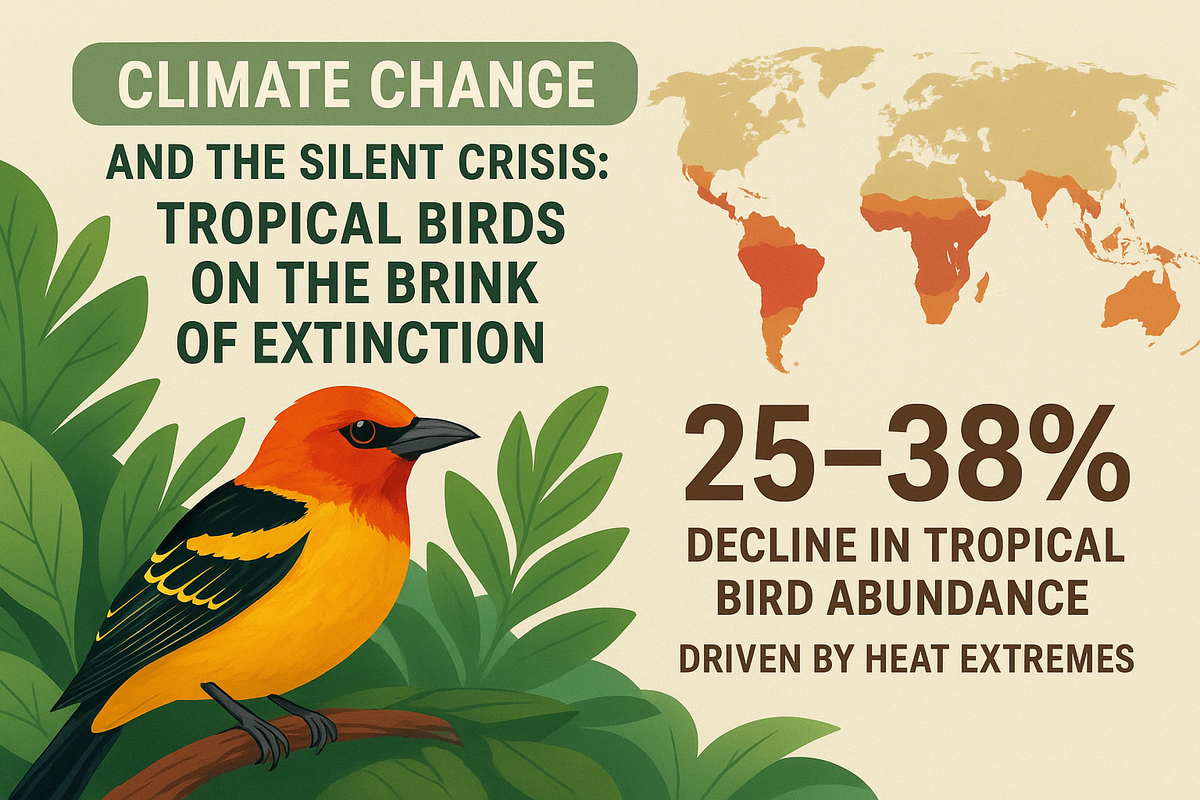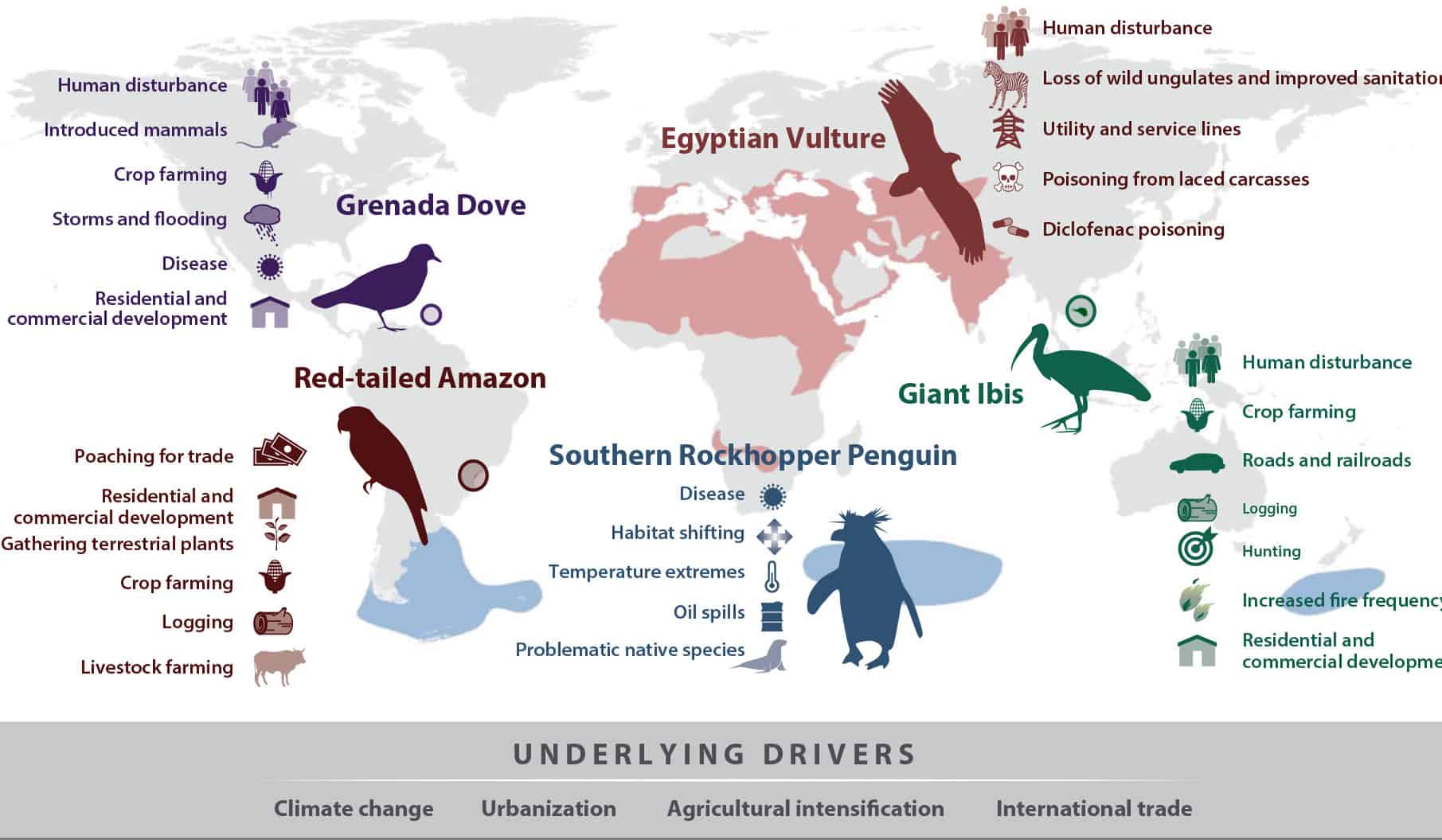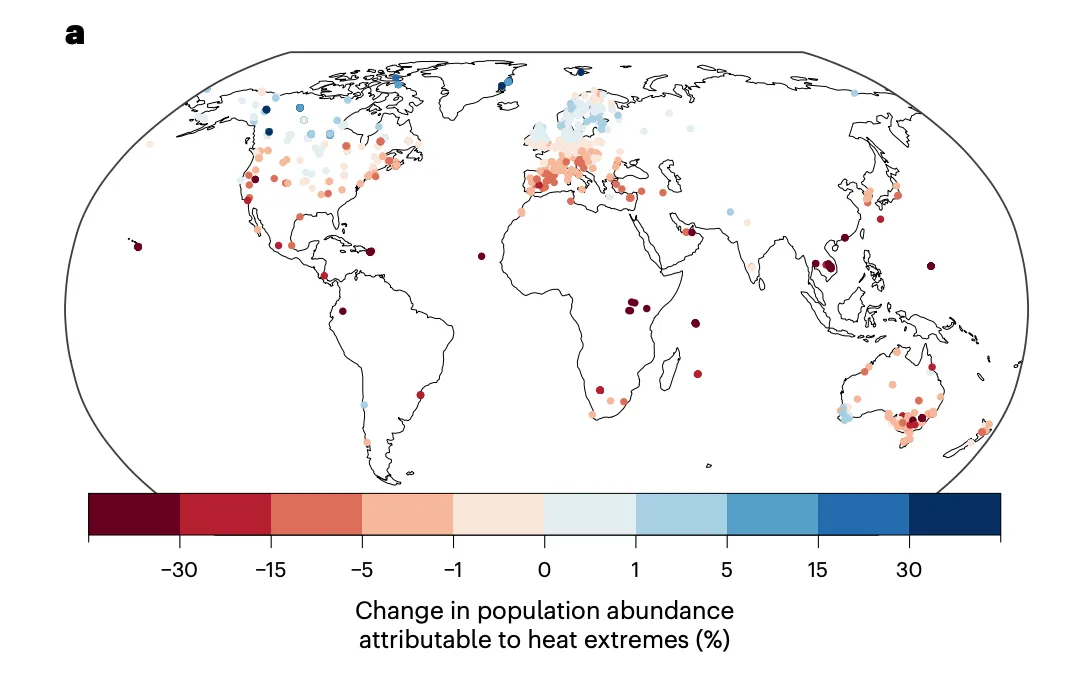The Silent Exodus: How Climate Change is Driving a Mass Extinction of Tropical Birds
A new study from Australian and European researchers reveals a catastrophic decline in tropical bird populations, with extreme heat being a greater threat than habitat loss.

Written by Lavanya, Intern, Allegedly The News
MEXICO CITY, August 14, 2025
The vibrant, cacophonous rainforests of the world are growing eerily quiet. A new, landmark study has unveiled a hidden, accelerating crisis that threatens to unravel the intricate web of life in the tropics. While the public imagination has long focused on deforestation as the primary driver of biodiversity loss, a groundbreaking analysis by a consortium of Australian and European researchers reveals a more sinister and pervasive threat: extreme heat driven by climate change.
For decades, the story of avian decline has been a tragic but seemingly straightforward one: bulldozers clear forests, habitats shrink, and species disappear. This narrative, while rooted in truth, is now incomplete. The new study, published in the prestigious journal Nature Ecology & Evolution, meticulously separates the impacts of direct human pressures from those of climate change. Its conclusion is chilling: the historical intensification of heat extremes has already caused a staggering 25-38% reduction in tropical bird populations since 1950 when compared to a world without human-driven climate change. In some cases, specific populations have declined by over 50%. This isn’t a future prediction; it’s a crisis that is already here, unfolding silently in the world's most biodiverse regions.
The researchers, from institutions including the Potsdam Institute for Climate Impact Research and the University of Queensland, meticulously analyzed data from over 3,000 bird populations and 90,000 scientific observations spanning from 1950 to 2020. They then combined this vast biological dataset with detailed, daily weather records stretching back to 1940. This robust methodology allowed them to model the precise impact of climate factors, particularly extreme heat, on bird population growth. The findings challenge the conventional wisdom that direct human pressures are the dominant driver of population decline in tropical regions. Instead, they provide a powerful, data-driven explanation for a perplexing phenomenon: the decline of bird populations in remote, undisturbed rainforests where habitat loss is not a factor. This proves that climate change is a powerful, independent force driving the biodiversity crisis.
The Mechanics of a Collapse: How Heat Kills
To understand why extreme heat is so deadly for tropical birds, one must appreciate their unique physiology and evolutionary history. Unlike species in temperate zones that have adapted to wide seasonal temperature swings, tropical birds have evolved in a remarkably stable climate. Their bodies are finely tuned to a narrow range of temperatures, and they have limited physiological mechanisms for coping with excessive heat. When temperatures spike to dangerously high levels, these birds face a triple-pronged assault:
- Heat Stress and Dehydration: Birds have a high metabolic rate and body temperature. When ambient temperatures exceed their internal tolerance, they must expend immense energy to cool down. This often involves panting, which can lead to rapid dehydration. As the study notes, these extreme heat days are now occurring up to ten times more often than they did a few decades ago, increasing from an average of three days a year to thirty. This sustained physiological stress leads to excess mortality, particularly among vulnerable young birds and adults during physically demanding activities like breeding.
- Reproductive Failure: Breeding is an energy-intensive process. Extreme heat events can disrupt breeding cycles, leading to reduced fertility and even nest abandonment. Birds may spend so much time and energy trying to cool themselves that they neglect their nests, leaving eggs or chicks exposed to the sun and predators. A single extreme heat event during a crucial part of the breeding season can lead to the loss of an entire generation of birds. This is particularly devastating for species with low reproductive rates.
- Foraging Impairment: High temperatures can also impact the availability of food sources. Insects, for example, may become less active during the hottest parts of the day, making it difficult for insectivorous birds to find food. At the same time, the birds themselves are less active, reducing the time they can spend foraging. This creates a feedback loop of nutritional stress and heat stress, further weakening populations.

The study’s data provides a stark numerical picture of this crisis: compared to a world without human-driven climate change, bird populations are now 25-38% smaller. This isn't just an abstract number; it represents millions of individual birds and countless lost generations. The most vulnerable species are those with small geographic ranges and specialized niches, as they lack the ability to simply move to a cooler region. Species like the resplendent quetzal of Central America and the Carpentaria grasswren of Australia's dry tropical savannas are facing heightened risks.
The Domino Effect: Ecosystems on the Brink
The decline of tropical birds is not a standalone tragedy. It is a critical early warning sign of a broader ecological collapse, as these birds are fundamental to the health and functioning of their ecosystems. Their disappearance sets off a series of cascading effects that can irreversibly alter the structure and function of tropical forests.
- Forests and Seed Dispersal: Birds are the architects of the forest, acting as vital seed dispersers. Frugivorous birds consume fruits and, in the process, carry seeds away from the parent plant, depositing them in new locations. This process is essential for forest regeneration, genetic diversity, and the colonization of new areas. Without a healthy population of birds, the seeds of many plant species will fall directly beneath the parent tree, leading to overcrowding and reduced survival. A decline in seed-dispersing birds can lead to a long-term shift in the composition of a forest, favoring plant species that rely on other dispersal methods, or, in the worst case, hindering forest recovery altogether.
- Pollination: Nectar-feeding birds, such as hummingbirds and sunbirds, are crucial pollinators for a vast array of tropical plants. They have co-evolved with these plants in a delicate dance of mutualism, ensuring the plants' reproduction while securing their own food source. The loss of these bird pollinators can be catastrophic for the plants they serve, potentially leading to their decline and extinction.
- Food Chains and Pest Control: Insectivorous birds are the natural pest control of the forest, keeping insect populations in check. Their decline can lead to an increase in insect numbers, which in turn can lead to increased herbivory and damage to vegetation. This can impact nutrient cycling, alter fire regimes, and ultimately destabilize the entire food web. Furthermore, the loss of birds as a food source for predators can have ripple effects up the food chain, impacting everything from snakes to small mammals and larger predators.
The study's findings thus highlight a critical point: while conservation efforts have rightly focused on preserving land, they must now be dramatically expanded to include climate mitigation. Protecting a forest is no longer enough if the climate within that forest becomes uninhabitable for its inhabitants. The decline of these birds is a clear indicator that the entire system is under stress, and other species, from insects to mammals and plants, are likely facing similar, unseen threats.
The Path Forward: From Data to Action
The research provides not just a grim assessment but also a clear mandate for action. The authors emphasize that a multi-pronged approach is needed to address this existential threat.
Immediate and Long-Term Policy Shifts: The most critical step is the rapid and aggressive reduction of greenhouse gas emissions. As lead author Maximilian Kotz put it, "Protecting pristine habitats is crucial, but without dealing with climate change, it won't be enough for birds." This means that conservation policy must be inextricably linked with climate policy at both a national and international level. Governments must commit to and enforce emissions reduction targets that align with the scientific consensus to keep global warming well below the 2°C threshold.

Innovative Conservation Strategies: We must move beyond traditional conservation methods. This report calls for the development of new strategies specifically designed to mitigate the effects of extreme heat.
- Climate-Refuge Creation: Conservationists must identify and protect areas that serve as "climate refuges"—microclimates that remain cooler during heat waves. This may include high-altitude regions, areas with dense canopy cover, or locations with access to perennial water sources.
- Assisted Migration: In some cases, particularly for species with very limited ranges, a radical approach of assisted migration may be necessary. This involves carefully moving populations to new, cooler habitats where they have a better chance of survival.
- Technological Monitoring: Using advanced technologies like thermal sensors, satellite imagery, and acoustic monitoring, conservationists can better track bird populations and identify areas where they are experiencing heat-related stress. This data can inform real-time interventions.
- Ex-Situ Conservation: For the most critically endangered species, ex-situ conservation—breeding programs in captive settings or botanical gardens—may be a last resort to preserve genetic diversity and prevent extinction.
Community Engagement and Education: The public has a vital role to play. By supporting organizations that are at the forefront of climate and conservation research and by demanding accountability from their elected officials, communities can drive change. Citizen science projects, where local communities monitor bird populations and report on heat-related mortality, can provide invaluable data for researchers and policymakers.
The Unanswered Questions
The findings of this study force us to re-evaluate our understanding of the biodiversity crisis. It is not a distant, abstract problem but a present-day reality, and its silent victims are the creatures that define the world's most vibrant ecosystems. The loss of tropical birds is more than just an aesthetic tragedy; it's a direct threat to the ecological stability of the planet. How can we better integrate climate change education into conservation efforts to prepare communities and policymakers for the unprecedented challenges ahead?
The silence is growing louder. It is the sound of a system under immense stress. The fate of the world’s tropical birds is a bellwether for the future of our planet, and their silent exodus from our skies is a warning we can no longer afford to ignore.
Sources
Nature Ecology & Evolution journal, The University of Queensland, Potsdam Institute for Climate Impact Research, The Guardian, The Straits Times, and Mongabay.




